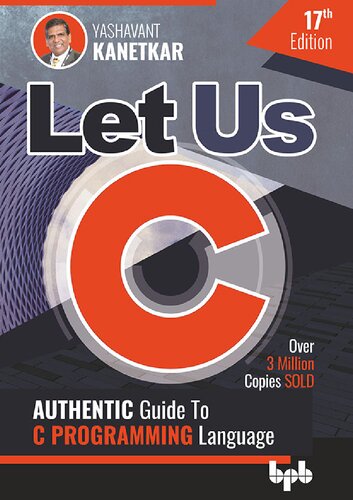

Most ebook files are in PDF format, so you can easily read them using various software such as Foxit Reader or directly on the Google Chrome browser.
Some ebook files are released by publishers in other formats such as .awz, .mobi, .epub, .fb2, etc. You may need to install specific software to read these formats on mobile/PC, such as Calibre.
Please read the tutorial at this link: https://ebookbell.com/faq
We offer FREE conversion to the popular formats you request; however, this may take some time. Therefore, right after payment, please email us, and we will try to provide the service as quickly as possible.
For some exceptional file formats or broken links (if any), please refrain from opening any disputes. Instead, email us first, and we will try to assist within a maximum of 6 hours.
EbookBell Team

4.7
96 reviewsKey Features
Strengthens the foundations, as a detailed explanation of programming language concepts are given
Lucid explanation of the concept Well thought-out, fully working programming examples
End-of-chapter exercises that would help you practice the skills learned in the chapter
Hand-crafted "KanNotes" at the end of the each chapter that would help the reader remember and revise the concepts covered in the chapter
Focuses on how to think logically to solve a problem
Description
The new edition of this classic book has been thoroughly revamped, but remains faithful to the principles that have established it as a favourite amongst students, teachers and software professionals round the world. "Simplicity"- that has been the hallmark of this book in not only its previous sixteen English editions, but also in the Hindi, Gujrati, Japanese, Korean, Chinese and US editions.
This book doesn't assume any programming background. It begins with the basics and steadily builds the pace so that the reader finds it easy to handle advanced topics towards the end of the book.
Who this book is for
Students, Programmers, researchers, and software developers who wish to learn the basics of C++ programming language.
Table of Contents
1. Getting Started
2. C Instructions
3. Decision Control Instruction
4. More Complex Decision Making
5. Loop Control Instruction
6. More Complex Repetitions
7. Case Control Instruction
8. Functions
9. Pointers
10. Recursion
11. Data Types Revisited
12. The C Preprocessor
13. Arrays
14. Multidimensional Arrays
15. Strings
16. Handling Multiple Strings
17. Structures
18. Console Input/Output
19. File Input/Output
20. More Issues In Input/Output
21. Operations On Bits…